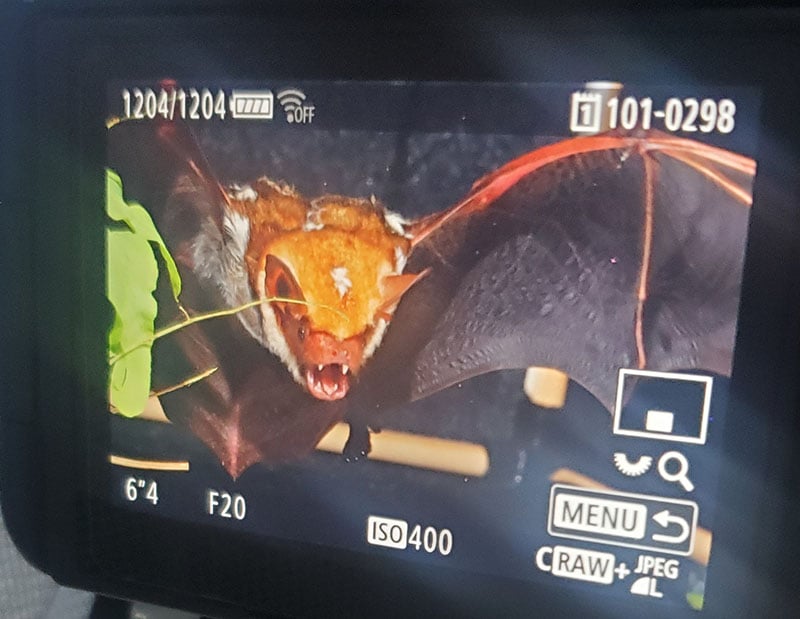Documenting Bats to Advance Global Conservation
When we talk about protecting pollinators, bees, butterflies, and hummingbirds often take the spotlight. But one group of essential pollinators is often overlooked—bats.
These quiet, often misunderstood animals play a crucial role in global biodiversity. And through our Global Discovery Expeditions, Greater Good Charities is working alongside local scientists to better understand, protect, and share their story with the world.

Bats are vital for healthy ecosystems. As pollinators and seed dispersers, they help regenerate forests and maintain balance in areas impacted by deforestation. In fact, nearly all plants that grow after a forest has been clear-cut can be traced to bats who dispersed their seeds.
They also consume vast amounts of insects, providing natural pest control and reducing the need for chemical pesticides.
Yet despite their ecological value, bats remain widely misunderstood and often underprotected.
too many unknowns
 PHOTO © Greater Good Charities
PHOTO © Greater Good Charities
While bats are major players in every ecosystem where they live, we still don’t know a lot about them. So as we work to better understand and protect our planet, we need to better understand and protect bats. In the U.S., the two states with the greatest bat diversity are Texas and Arizona, with 28 and 29 bat species, respectively. One of the reasons why Vietnam is an ideal location for our Global Discovery Expeditions is that the country has more than 120 different bat species.
Up until now, we haven’t had a lot of information about most bat species, or even photos. So during a recent BioBlitz at the Sao La Nature Reserve, a key biodiversity spot in Vietnam, our biologists teamed up with Vietnamese scientists to change that.
How do you catch a bat?
 PHOTO © Greater Good Charities PHOTO © Greater Good Charities |
%20copy.jpg?width=827&height=620&name=MicrosoftTeams-image%20(80)%20copy.jpg) PHOTO © Greater Good Charities PHOTO © Greater Good Charities |
During a typical BioBlitz, scientists go into the field for a short period to get a quick tally of species in a particular area. They head out when darkness falls and many animals are more active. Bats, however, require a lot more pre-planning than most species.
For bats, we start during the day, assembling a harp trap in front of the entrance to the cave where they live. Like the musical instrument that shares its name, a harp trap consists of a frame with strings running from top to bottom. The bats cannot detect these nylon strings, nor do the strings harm their wings. So, when bats leave the cave at night, they fly right through the strings and safely into the collecting bag at the base of the trap. Our scientists are there waiting to collect the bats and bring them back to camp to study and document them, before releasing them back where we found them.
The information and photos we gather are fed into the massive digital database, and they’re being used by the biologists on our team who are working on a book about the mammals of Vietnam.
By getting a close look at the bats in Vietnam we can get a much better idea of who they are and what we need to do to protect them – and share that knowledge with scientists, students, and enthusiasts worldwide who are working to understand – and celebrate – all that bats contribute to our ecosystems.

%20Save%20the%20Rhino%20International-1.jpg)
